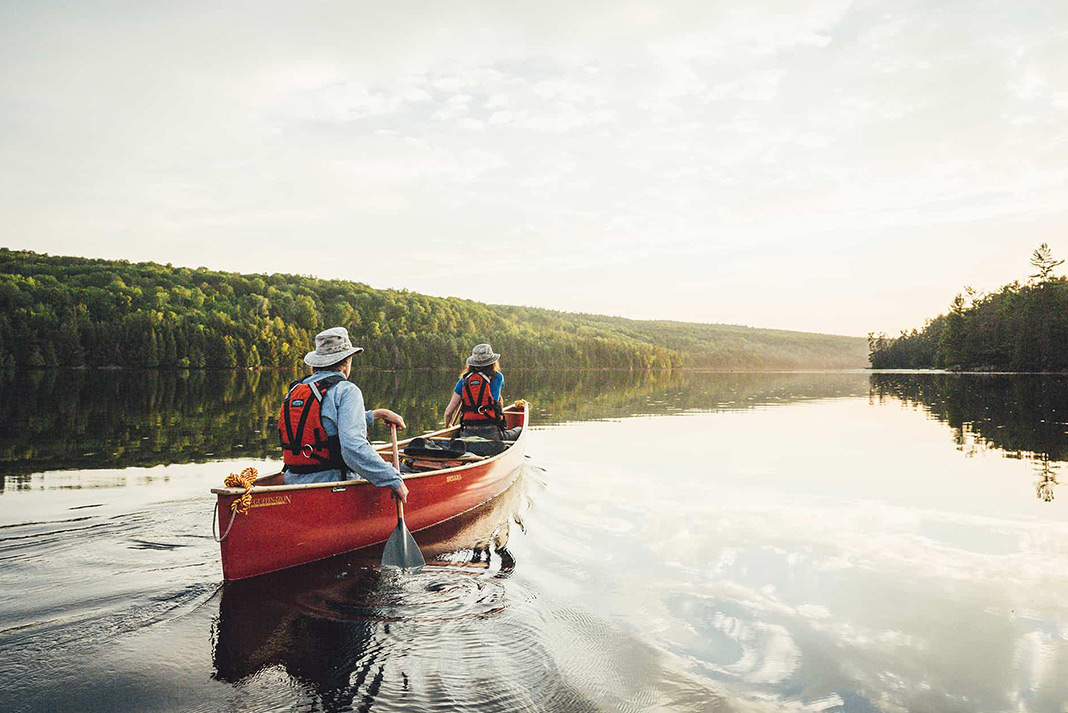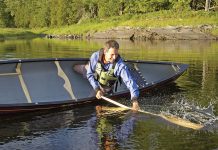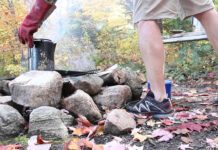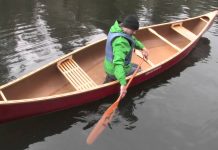Whether paddling your canoe tandem or solo, learning how to do the J-stroke will allow you to paddle in a straight line. Francis Boyes of Smoothwater Outfitters in Temagami, Ontario, shares some expert tips to help you with your J-stroke and control your canoe.
Canoeing is a great recreational activity. Being able to enjoy it depends on your ability to control the canoes direction. Whether paddling tandem or solo, the J-stroke will allow you to paddle on course in a straight line. In a tandem situation, the stern paddler performs the J-stroke.
The J-stroke is so named because the paddle, as it moves through the water, traces the shape of the letter J. The stroke has two parts. The forward propulsion part, and the corrective part. during the corrective part, the paddle acts as a rudder in the water.

How to do the J-stroke
- You begin with the forward stroke, as you draw the paddle back, you turn the power-face of the paddle away from the canoe. To do this, you must break your wrist over, so that the thumb of your upper hand points down.
- The paddle blade pauses in the water at an angle to the canoe. This allows the water to push on the power-face and move the stern of the canoe, away from the side that you were paddling on, correcting the direction of the canoe. If you need additional correction, add a pry to the end of your stroke.
Common errors beginner paddlers make on the J-stroke
There are several errors that novice paddlers make when learning the J-stroke.
- The first error is extending the forward part of the stroke too far. By the time they turn the paddle into its rudder position, much of the blade may be out of the water.
- The second common error, is not turning the power-face of the paddle far enough. You need to break your wrist over, so that the blade of the paddle moves into a vertical position in the water.
- The third error, is not ending the stroke with your paddle at enough of an angle to the canoe. If you paddle blade ends up parallel to your canoe, it does not offer enough resistance to the water.
Tips for an effective J-stroke
- Some canoeing purists will tell you that you should never allow the shaft of the paddle to come into contact with the gunnel of the canoe. This is an issue of style, not function. In fact, allowing the shaft of the paddle to contact the gunnel, increases efficiency. When you allow the paddle shaft to contact the gunnel, the force of the water on the paddle blade is transferred directly to the canoe. Your lower arm acts as a guide only and does not tire.
- One final tip, don’t grip the shaft of your paddle tightly with your lower hand. Hold it gently and allow the paddle to rotate. You will find this more relaxing.








